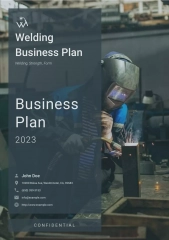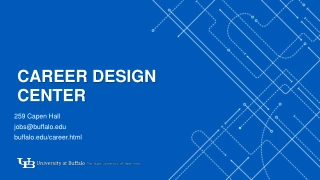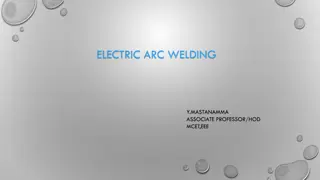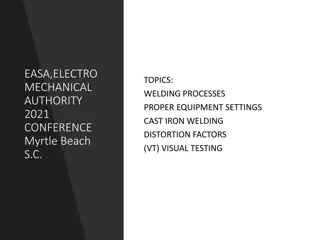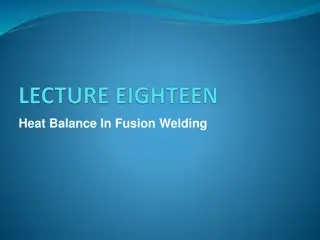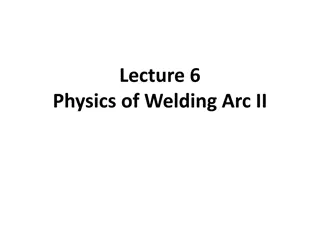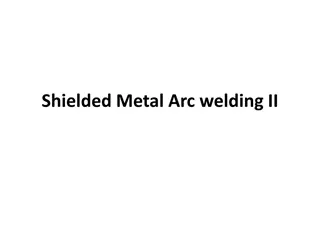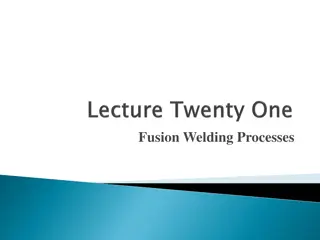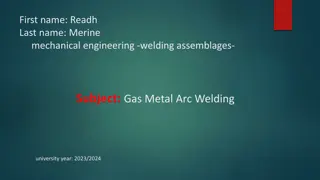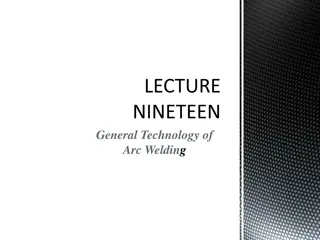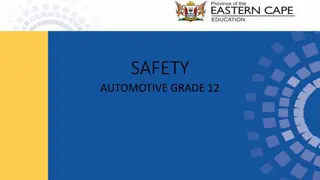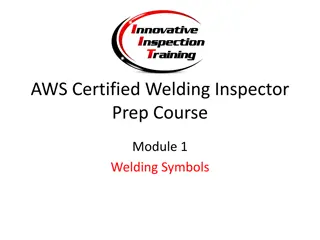Exploring Welding as a Career Path
Discover the world of welding with insights on the role of a Welder, career progression, routes to become a welder, and required subjects for entering the sector. Learn about day-to-day responsibilities, potential earnings, and opportunities for growth within the welding industry.
Download Presentation

Please find below an Image/Link to download the presentation.
The content on the website is provided AS IS for your information and personal use only. It may not be sold, licensed, or shared on other websites without obtaining consent from the author.If you encounter any issues during the download, it is possible that the publisher has removed the file from their server.
You are allowed to download the files provided on this website for personal or commercial use, subject to the condition that they are used lawfully. All files are the property of their respective owners.
The content on the website is provided AS IS for your information and personal use only. It may not be sold, licensed, or shared on other websites without obtaining consent from the author.
E N D
Presentation Transcript
By the end of this session, learners will understand: What the role of a Welder involves How to become a welder What are their next steps What routes 1 <Title of presentation>
Key info Key info Entry level 20,000 Experienced 35,000 Typical hours: 44 - 46 per week Working pattern: You may work evenings and weekends
What does a welder do? What does a welder do? Welders cut, join and shape metal plate, pipework and composite materials in the aerospace, construction and civil engineering industries Example day-to-day job responsibilities Setting out the metals, plastics or alloys you need to cut and join Carrying out your welding by following engineering drawings and instructions Using precision instruments to check, measure and test the cuts and joins you ve made Using semi-automatic spot-welding equipment.
Career progression Career progression If you start off as a welding apprentice or junior welder, with time and experience you can become a team leader, supervisor or workshop manager. You could also move into welding inspection, testing and quality control. You could even specialise in underwater welding if you take on commercial diver training. You would most likely use this to work on shipbuilding or offshore rigs. You might even be called in to explore new shipwreck discoveries under the sea.
What routes you can take What routes you can take to be a welder? to be a welder? Apprenticeship: An apprenticeship can lead to a job as a trainee welder. You will need to pass competency tests for the type of welding you do and develop technical, maths and measuring skills. Level 2 Apprenticeships typically take 18 months, and Level 3 take around 3-4 years College: You can go to College to study Engineering full-time. Relevant courses include: Level 2 Award in Welding Skills Level 2 Award in Welding Techniques and Skills Level 3 Diploma in Fabrication and Welding Engineering Technology T Level in Engineering, Manufacturing, Processing and Control
English Maths Biology What What subjects subjects could I could I Chemistry Physics Geography What subjects do I need to enter this sector? focus on? focus on? Foreign languages Art and design Design and Technology Physical education Computing History
Our role models Our role models Our role models are inspirational individuals who have achieved career success in their chosen field through Apprenticeship and Technical Education pathways. They represent the impact that such a chosen pathway can have to future generations. Their wealth of experience in their field is combined with an exciting and inspirational career journey that has successfully utilised the skills learnt through our competition skills development programme. On the next slide you will get the chance to hear from one of them.
Conversations with a welder Conversations with a welder Name: Charlie Marshall Occupation: Welder Education: College Location: North East
Discussion Discussion Is this a sector you would consider entering? What do you see as the positives for this career pathway? What do you see as the negatives?
Next steps Find an Apprenticeship: https://www.findapprenticeship.service.gov.uk/apprenticeshipse arch Find a course: https://nationalcareers.service.gov.uk/find-a-course/search Not sure what role would be right for you? INSERT Conversations with link here
Thank you Any questions?













